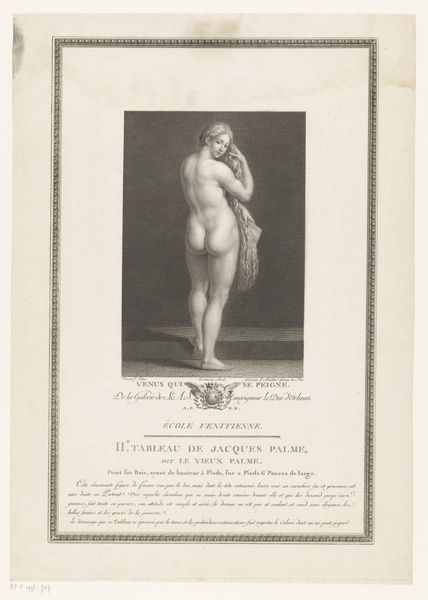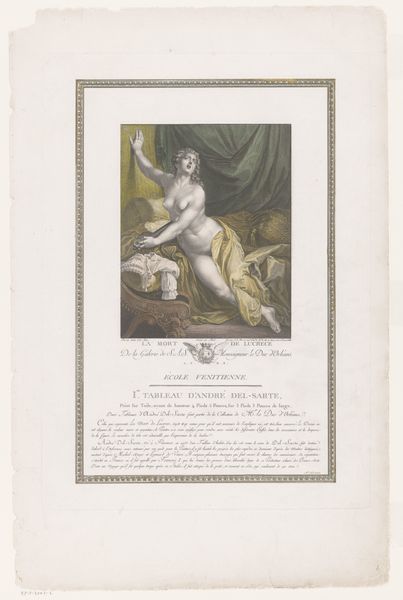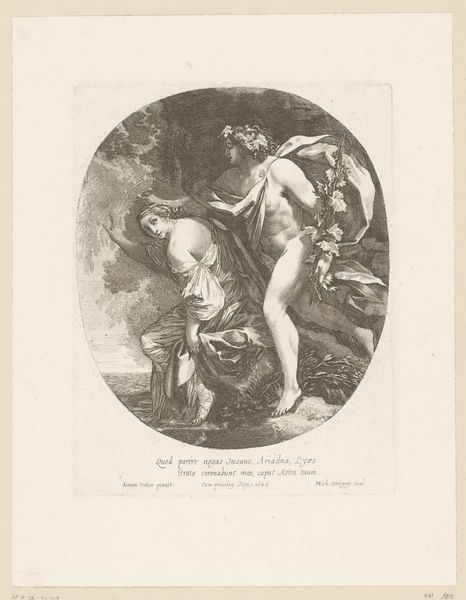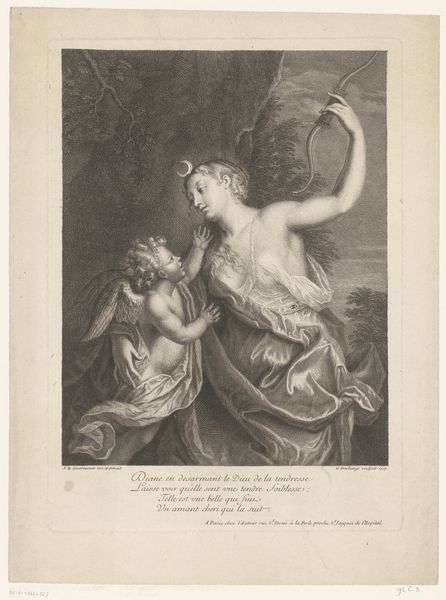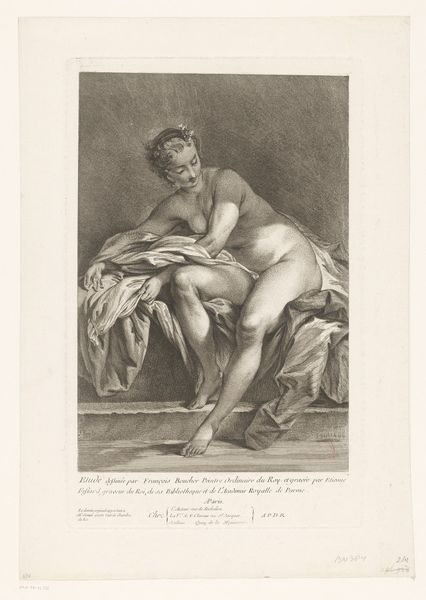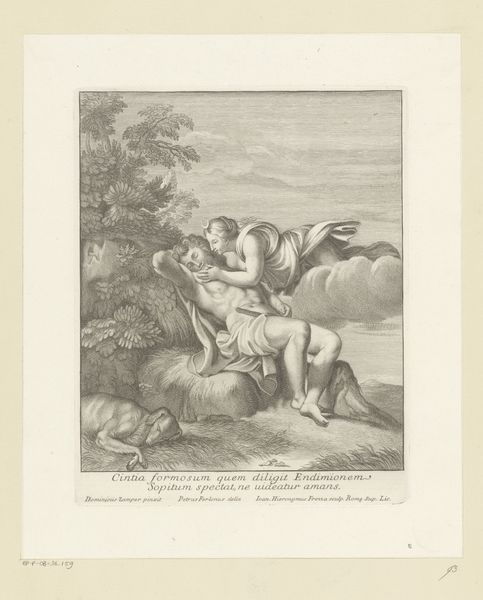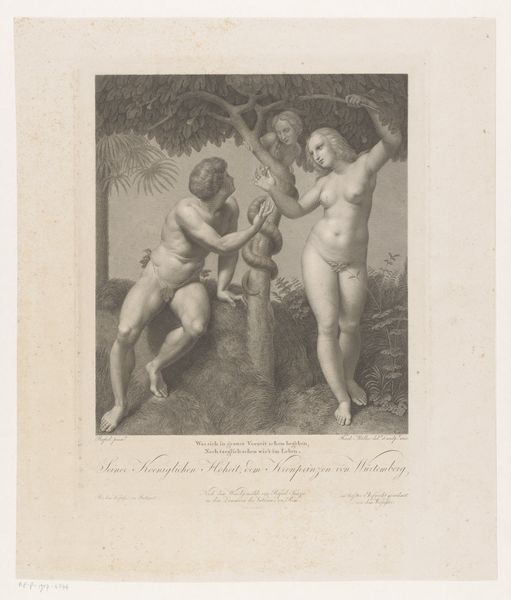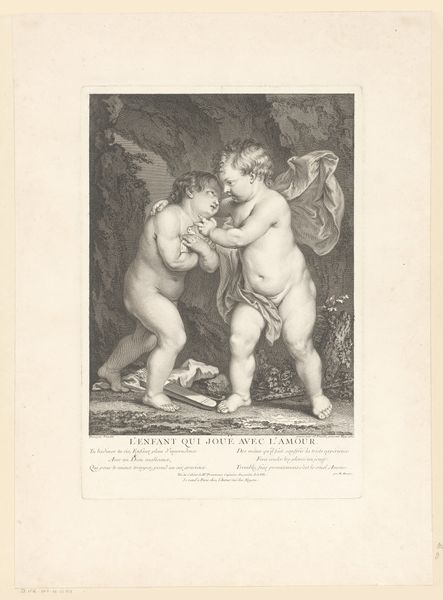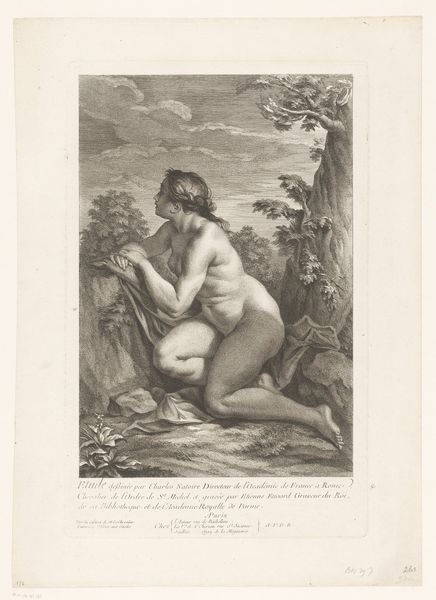
print, engraving
#
neoclacissism
#
allegory
# print
#
figuration
#
history-painting
#
academic-art
#
engraving
Dimensions: height 368 mm, width 238 mm, height 420 mm, width 296 mm
Copyright: Rijks Museum: Open Domain
Curator: This engraving, titled "Amor zijn boog spannend", dating back to 1789, depicts Cupid fiercely bending his bow. It is attributed to Jacques Bouillard and resides in the Rijksmuseum. It certainly catches the eye. Editor: It's arresting, certainly. The dramatic tension in Cupid’s posture is palpable. He is the picture of focused intensity. It’s an emotionally charged image, despite its cool neoclassical style. Curator: Precisely. Neoclassicism, with its emphasis on clarity and reason, often served as a vehicle for conveying allegorical themes. In this case, we have Amor, a potent symbol throughout art history, not as a gentle cherub, but as an almost violent force, bracing himself, preparing for... well, impact. Editor: I’m curious about that implied violence within a cultural context. This was just before the French Revolution, a period of immense social and political upheaval. Could this depiction of Cupid, straining and preparing his bow, reflect some kind of wider sense of impending conflict or perhaps a cultural elite bracing itself? Curator: That's a very interesting interpretation, particularly when considering the history painting influences present in the composition. Bouillard places him, very symbolically, above a crowd of cherubic heads. Note his determined gaze, that set jaw; and it's certainly difficult not to see the influence of revolution coming. It makes the contrast with the traditional depiction of love stark, almost brutally so. Editor: Yes! And how the print medium makes it more democratic! This wasn’t an artwork only enjoyed by a patron, but available and disseminated amongst wider circles... a symbolic seed for revolt against old standards and the old ways. Curator: Indeed. The very act of replicating this image and dispersing it through prints subtly democratized the original sentiment, amplified the artwork’s possible interpretations in tumultuous times. The symbolism shifts from a commentary on love to one about revolution itself. Editor: Food for thought! The work initially comes off as academic, but then it grows on you in a most engaging way as its historic moment is revealed. Curator: Exactly! Hopefully, this inspires some thinking on how symbols in artwork continue resonating throughout the ages.
Comments
No comments
Be the first to comment and join the conversation on the ultimate creative platform.
